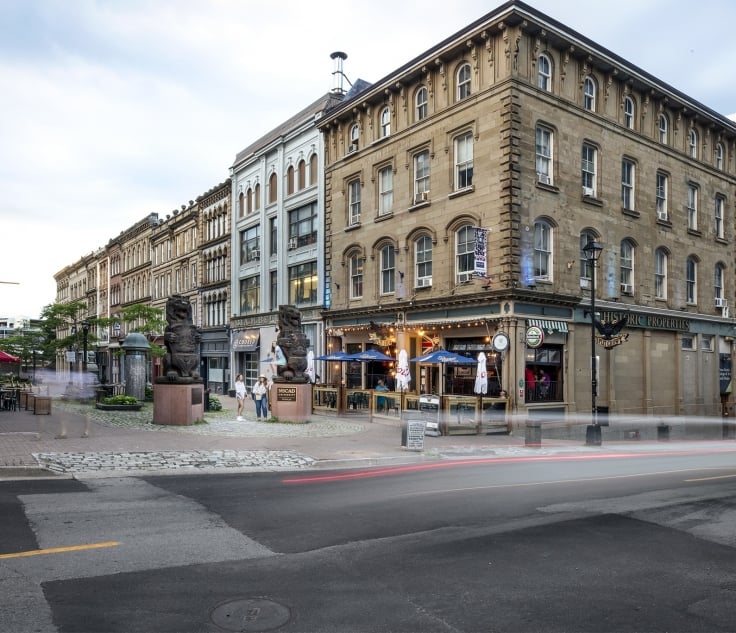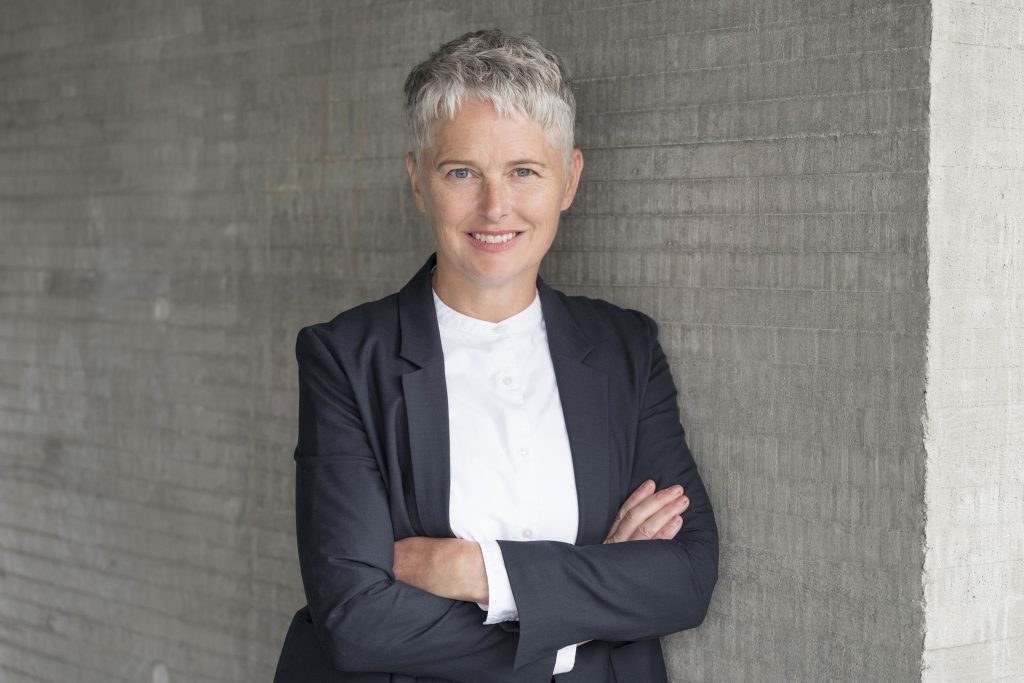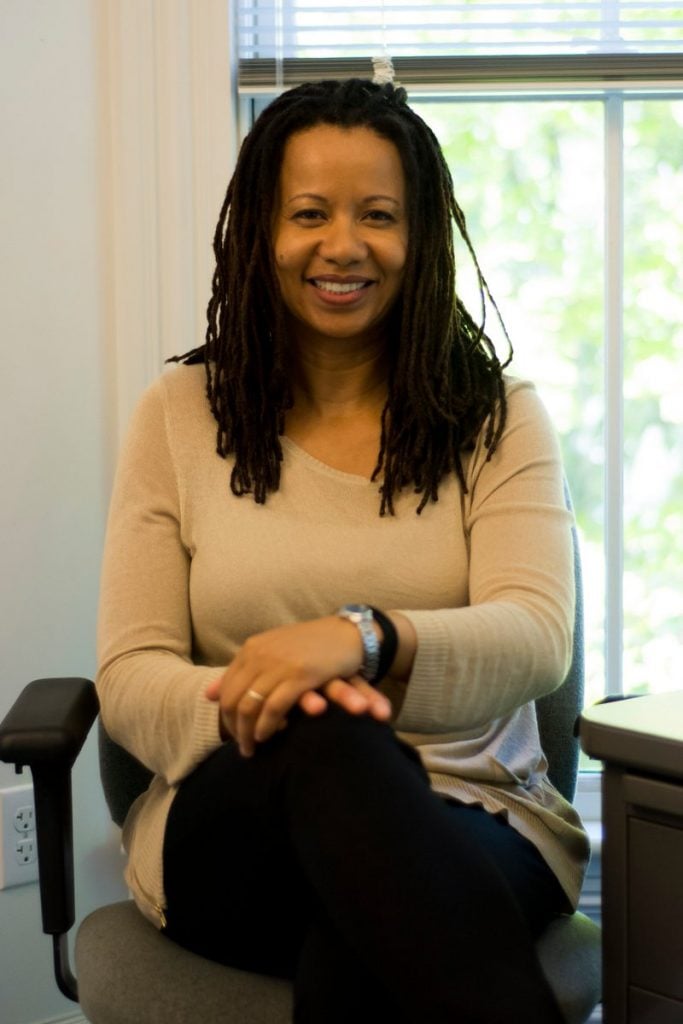Art World
Faculty at One of Canada’s Top Art Schools Demand to Know Why the University’s Progressive-Minded President Was Let Go
The school's board is coming under fire for refusing to comment on the removal of university president Aoife Mac Namara.

The school's board is coming under fire for refusing to comment on the removal of university president Aoife Mac Namara.

Taylor Dafoe

On June 26, Aoife Mac Namara, the president of the Nova Scotia College of Art and Design (NSCAD) in Halifax, Canada, was abruptly removed by the school’s board of governors. The 22-member governing group for the oldest art school in the country gave no reason for its decision, noting only that it was a “personnel matter.”
For members of the NSCAD community, the news came as quite a shock, especially considering that Mac Namara was “removed” but not fired, allowing her to still teach at the university, which suggested she did nothing to put either students or the school in jeopardy. (Mac Namara is not currently working at the school.)
“The NSCAD board of governors recognizes there have been questions raised about the recent news regarding NSCAD’s former president, as well as comments about the board’s role in such a process,” the board wrote in a statement appended to a June 30 press release about the school’s 2020–21 budget.
“We cannot and will not get into details on decisions made regarding confidential personnel matters that rest between the board and its president.”

The Granville Street campus at the Nova Scotia College of Art and Design. Courtesy of NSCAD.
“There was a lot of hope when Aoife was appointed,” says Karin Cope, the acting chair of the school’s art history and contemporary culture department, who spoke to Artnet in her role as a representative of the activist group Friends of NSCAD.
“Unlike any past president in living memory, she seemed to speak truth to power. She really set out a vision of a much more inclusive and community-engaged arts institution.”
Yet despite demands, the university board has done little to address the questions looming over the situation, including whether or not Mac Namara’s Diversity, Equity, and Inclusion (DEI) plans had anything to do with the decision to let her go.
Days after the news broke, Friends of NSCAD launched an online petition calling for the board to be fired, and for Mac Namara to be reinstated. (As of Tuesday morning, it had over 5,000 signatures.)
In July, more than 95 percent of the faculty union filed a vote of no confidence in the board of governors. And last week students, faculty, and staff picketed in front of the school, demanding answers.
Still the members of the board, all but four of whom are government-appointed, have remained largely silent or vague.
Mac Namara did not respond to Artnet News’s request for comment. She has not spoken publicly since her removal.

Aoife Mac Namara. Courtesy of NSCAD.
Mac Namara, who was born in Nova Scotia and raised in Ireland, was hired by NSCAD in August 2019. At the time, her resume boasted three decades of experience in arts education, including four years as dean of Simon Fraser University’s Faculty of Communication, Art, and Technology in British Columbia. Her hire was seen as a victory, and it came at a time when the school desperately needed one.
In 2011, NSCAD was on the verge of losing its independence after the completion of a costly new campus on the Halifax Seaport. The construction project, which many at the time lambasted for being an unnecessary addition, put the school $19 million in debt, and the province, which would be required by law to take over the institution should it become financially insoluble, failed to deliver supporting funds.
Through a series of cost-cutting measures, NSCAD got back to the black by 2018. But at that point, the school’s collective bargaining agreement with the faculty union had expired, and a bitter and protracted negotiation led to a faculty strike, which ended in March 2019. Five months later, the board hired Mac Namara to come in and clean up the resulting mess.
“She was a breath of fresh air,” says Christina Warren, NSCAD’s manager of financial aid and student counseling. “From day one, she was very clear about the paths she wanted to take coming to our institution. She had very concrete plans in terms of working on strategies for reconciliation with our indigenous populations and spoke openly about not wanting to raise tuition, about finding other revenue streams for the university.”
Warren added: “She comes in and the most amazing thing happens: she started doing the things she said she was going to do.”

NSCAD protestors on August 13, 2020. Courtesy of Eryn Foster.
Indeed, Mac Namara got to work quickly, focusing specifically on improving the diversity of the institution—an effort that included bringing in esteemed art historian Charmaine Nelson to establish the school’s federally-funded Institute for the Study of Canadian Slavery, the first initiative of its kind in the country. And on June 5, following the police killing of George Floyd, Mac Namara issued a statement calling on the board of governors to commission a review of institutional racism at NSCAD.
On June 25, amidst calls from the student body for the board of governors to bring on a person of color, the board sent out a statement that echoed Mac Namara’s message. They pledged to diversify the board and usher in a new era of “transparency”—a word used twice in one paragraph.
The next day they removed Mac Namara from her post.
The irony of that timing was not lost on Nelson. “Whether intentional or not, the board’s decisions appear to be not merely an attack on President Mac Namara, but an attack on the greater racial inclusiveness and anti-racist principles that she so courageously championed,” the academic wrote in a July 2 letter to board chair Louise Anne Comeau, according to CBC.

Charmaine Nelson. Courtesy of NSCAD.
In the letter, Nelson said she was not keen to leave her previous role at McGill University, where she was the “only black art historian in a tenured or tenure-track position at a Canadian University,” but chose to do so because of MacNamara.
“President Mac Namara’s leadership was one of the key reasons that I decided to accept NSCAD’s offer and join the NSCAD community. Specifically, her clear vision and devotion to transforming NSCAD into a space that more directly attracts, recruits, retains, and supports black, indigenous, and people of color constituents, convinced me that I might finally find a supportive academic environment.”
“Frankly,” she continued, “your lack of transparency, refusal to consult, and the ongoing lack of information and clarification about your decision-making process is opening up a gulf between the board and NSCAD’s constituents, the faculty, and staff who do the work and the students and alumni that we have and will continue to serve.”
Nelson did not respond to Artnet News’s request for comment.
“I think that the board was extremely upset with Aoife for a host of reasons, including her very, very strong stance in the wake of the Black Lives Matter protests around the need for change at the university,” Cope says. “I believe profoundly that Aoife, the student union, and many people on the faculty were moving to a place where there was going to be an institution-wide call for some change to the structure of the board.”
“The board vigorously condemns any form of racism and wholeheartedly supports the initiatives undertaken at NSCAD to date,” the board wrote on August 11 in its first and only public response to the many questions surrounding the removal of Mac Namara
“The board will continue to support all actions taken by NSCAD to address systemic racism and take concrete actions to foster a culture of equity, diversity, inclusivity, and accountability—including at the board level.”
When reached by Artnet News, the NSCAD board of governors declined to expand on its statement.
The board’s battles with the college community also stem from a proposed real estate deal from 2019.
In a document reviewed by Artnet News, Armour Group, a Halifax-based investment firm, laid out the framework of a plan to purchase NSCAD’s historic downtown Granville Street campus, which it originally sold to the school in the early 2000s. (That sale included a provision that granted Armour Group the first right of first refusal should the property ever be sold again, according to the Halifax Examiner.)
A 2013 report found that the Granville campus was “unfit for function” and would require a “heroic effort” to upgrade the building to a modern standard. The hypothetical deal would have the investment firm renovate the property and lease a portion of it back to the school. It would also grant Armour Group density rights, allowing the firm to build high-rises over the campus.
Critics of the board have suggested that there are potential conflicts of interest: the NSCAD board vice-chair, Sean Kelly, works for the Stewart McKelvey law firm, which previously represented Armour Group, while board treasurer Alan MacPherson owns a prominent local contracting company that restores old buildings. (To date, no more direct links have been drawn between board members and the Armour Group that would violate the board’s conflict-of-interest bylaws.)
“The Armour report is a symptom of a problem,” Cope says. “It is a symptom of very close ties between businesses that are implicated with the board and a sign of the board attempting to do a big thing without actually doing the work to make that big thing happen, which would include significant fundraising and foresight.”
In its August 11 statement, the board called the Armour project “an unsolicited conceptual proposal” sent to some members for consideration, and that they “determined not to consider the proposal or bring it forward for board review.”
“There has been no further discussion on this by administration since the summer of 2019 and it was therefore never brought to the board for consideration,” the statement said. “Under no circumstances would the board ever engage in a ‘backroom deal,’ consider any concept or project without a process of review in line with policies and best practices.”
The Armour Group did not immediately respond to requests for comment.

NSCAD protestors on August 13, 2020. Courtesy of Eryn Foster.
“Reinstatement of the former President is not under consideration,” the board said in its August statement, before adding that it “recognizes the contributions made by Dr. Mac Namara during her time as President.” (The statement marks the only time the board has publicly used Mac Namara’s name since removing her, despite five additional announcements sent from the board referring to her dismissal.)
In July, the board named Sarah McKinnon, the former director of academics at the Glenn Gould School of the Royal Conservatory of Music in Toronto, as interim president.
But the appointment did little to placate those still seeking answers as to why exactly Mc Namara was removed from her post.
“We owe it to her to stand with her at this moment, because she stood with us,” Warren says.